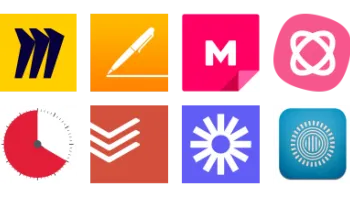Take a look inside 7 images
Grapevine
Pros: You can get up and running in minutes, and it's intuitive. Useful for students as well as teachers and administrators.
Cons: There's room for additions like video descriptions and improved moderation.
Bottom Line: This is a simple platform with a useful premise, and with some further development, it has a promising future.
Grapevine can be a great way for teachers and students to post asynchronous updates, collaborate with each other, or work as a team. For instance, participants can check in to let the teacher know how a student or group is doing on a project; for group assignments, have different members do the updates each time to show collaboration and promote accountability. For thick-skinned teachers wanting to understand the impact of their instruction, post a video to ask how things are going, and invite students to provide feedback through the comments section.
Teachers and administrators might also consider Grapevine for professional use. Administrators could reduce their use of email or virtual meetings with Grapevine by posting video updates that teachers and staff can view at their convenience. Better yet, create running faculty meetings. Instead of a constant stream of email updates, staff can give short, frequent video updates to let everyone else know pertinent information, and encourage question asking and answering in the comments. Department chairs can use a similar strategy, posting updates, surveying members, or presenting ideas for how to improve instruction, efficiency, or morale.
Grapevine is a video communication platform where users post and watch videos asynchronously. Account owners invite members via email to join their team. Once they join, team members can view videos as well as record and post videos, including replaying and restarting videos if they don't like the original. The feed updates as new videos are added, and email notifications are optional as well. Once users view a video, they can respond with comments and/or emojis in order to have a back-and-forth conversation about its content. Account owners can invite new team members at any time and organize them into groups. Videos remain on the dashboard for team members to rewatch or catch up on.
Grapevine certainly has potential for learning. Students can submit videos for anything: They can create read-alouds, reflections, presentations, or even speeches in native or nonnative languages. Because participants can respond to videos using comments or emojis, there's an opportunity for meaningful peer or teacher feedback. Since students can record multiple videos before submitting them, they can put their best face forward before the group sees their final product.
Educators who grow tired of in-person or virtual meetings will definitely appreciate the option to communicate on their own time. Short videos present a neat opportunity to share ideas, give project updates, or ask questions. Natural collaboration is possible here since students can post questions, and their peers can add to or clarify ideas.
Even though it's useful as-is, teachers and students will likely desire a bit more functionality. One area that could use particular attention when it comes to schools is accessibility. Students who have unique needs would benefit from features like different font styles and sizes, closed captioning, and text-to-speech capability. There are also some simple quality improvements that'd be nice to see, like allowing team members to title their videos and preview each video's length. Some basic moderation would also be helpful, allowing team owners/teachers to approve any videos that get added.
















